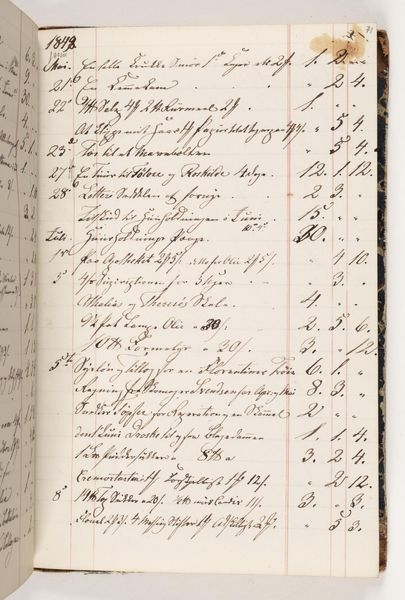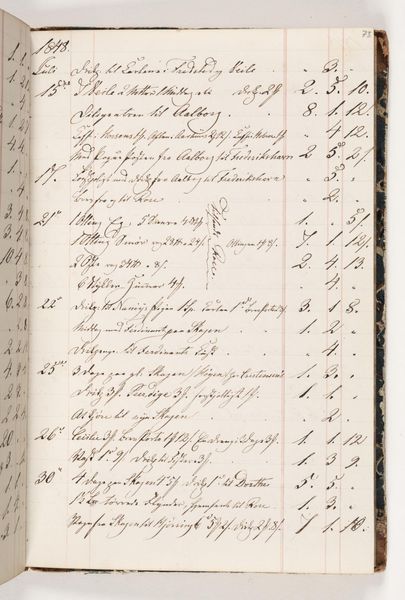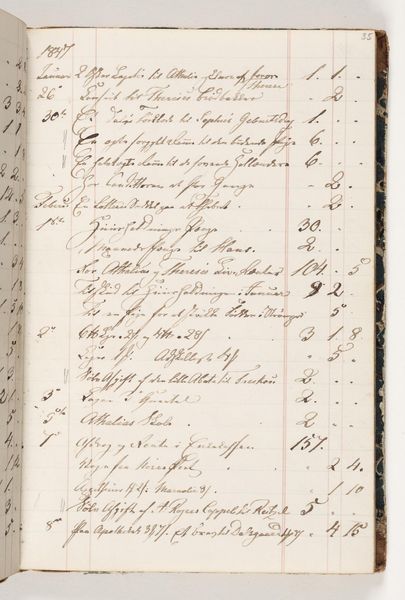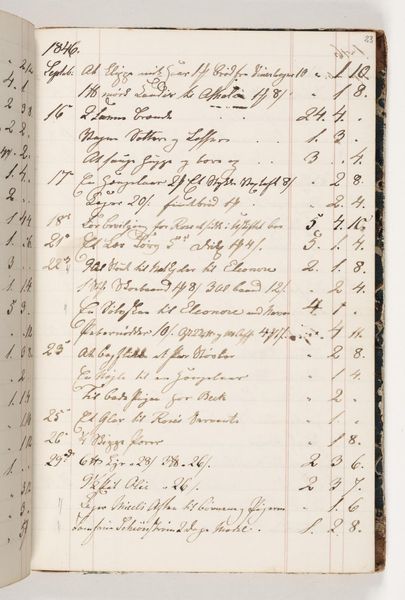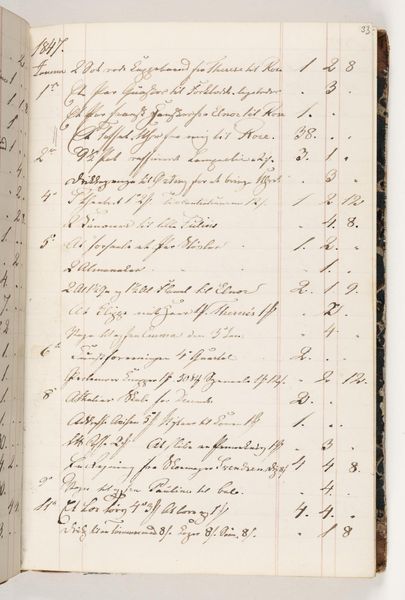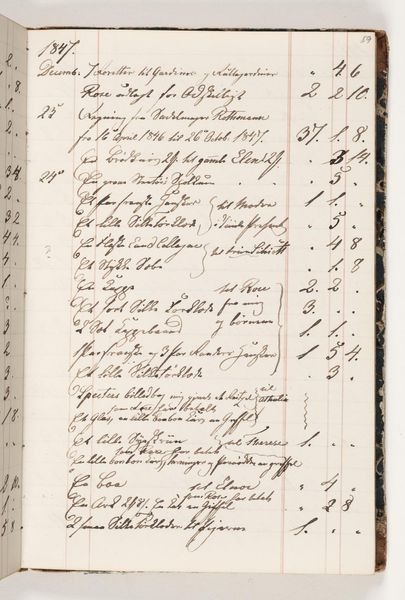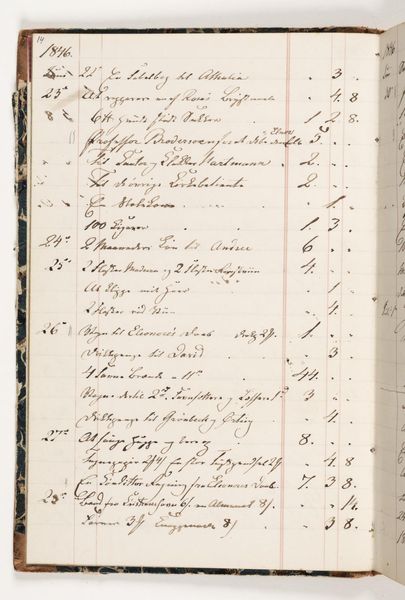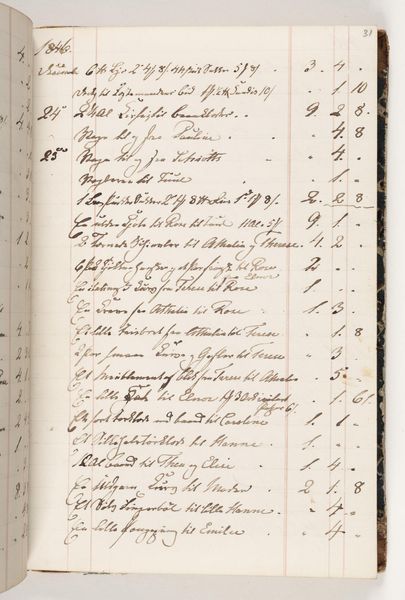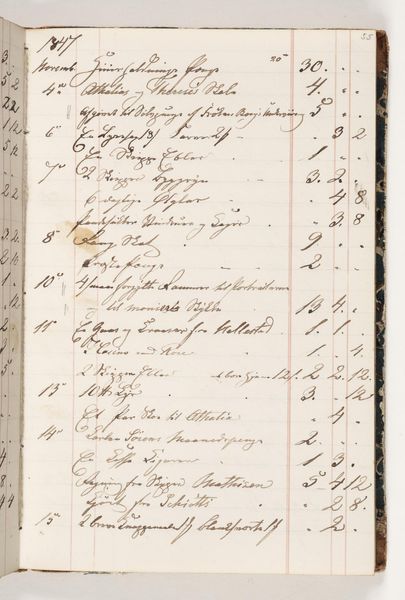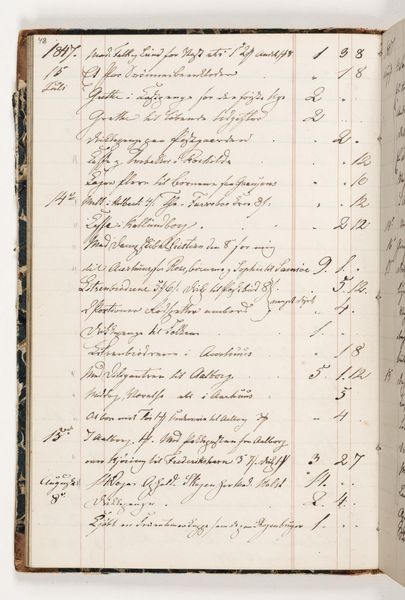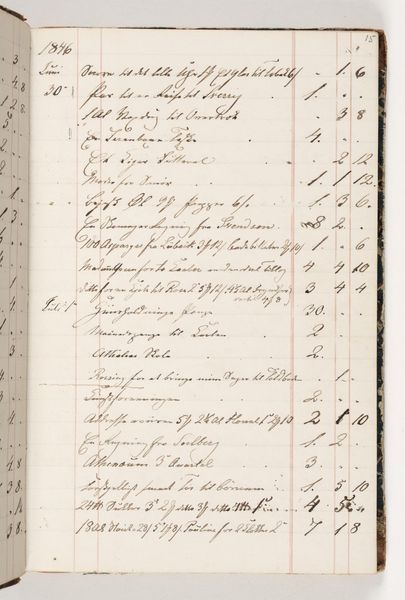
drawing, paper, ink
#
drawing
#
paper
#
ink
#
watercolor
Dimensions: 200 mm (height) x 130 mm (width) (bladmaal)
Editor: This is "Regnskab 1848" by Martinus Rørbye, created in 1848. It's an ink drawing on paper, and it looks like an account ledger. The neat handwriting and columns of numbers give it a feeling of order and precision. What do you see in this piece? Curator: It’s interesting how Rørbye, known for his romantic depictions of landscapes and scenes from his travels, also engaged with the mundane aspects of life like financial record-keeping. What does it say about the artistic process during a time of great upheaval, as in 1848, the year of revolutions across Europe, that artists like Rørbye might be compelled to focus their attention on these ordinary records? This was a period that shook established orders, challenging ideas about nationality, governance, and class. Editor: That’s fascinating! I hadn't considered the socio-political context. Does the act of meticulously documenting finances, something so seemingly removed from grand historical events, become a quiet act of resistance or perhaps a search for stability? Curator: Exactly. Think of it as an intersectional inquiry. The ledger offers insights into economic realities of the time. Who was keeping accounts? What were their transactions? It hints at complex power dynamics related to commerce, class, and maybe even gender if women were involved in these transactions. Editor: So, what seems like just a dry document is actually a window into a world of social and economic relationships! It really pushes you to think beyond the surface. Curator: Absolutely. Art isn't just about aesthetics. It's deeply entangled with its historical and social fabric. Editor: I’ll never look at an old ledger the same way again. This makes me want to go research Danish society in 1848! Curator: Wonderful. That's exactly what I hope people will do.
Comments
No comments
Be the first to comment and join the conversation on the ultimate creative platform.

